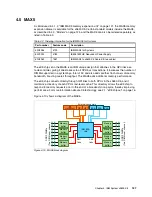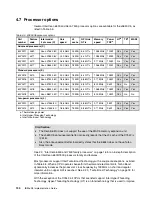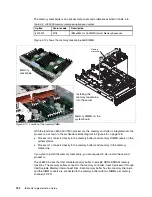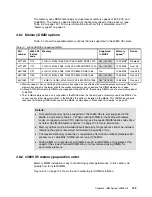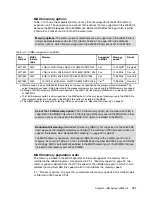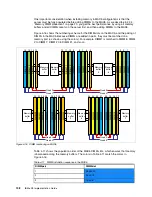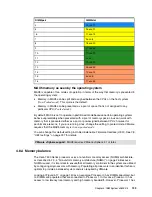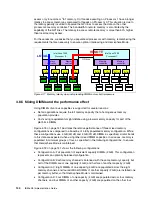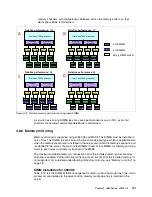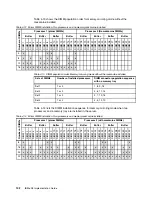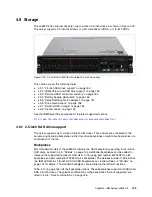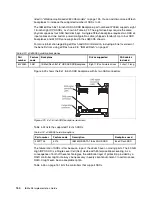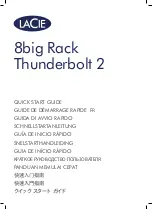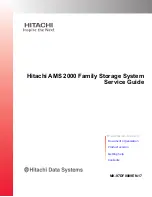
Chapter 4. IBM System x3690 X5
139
MAX5 memory as seen by the operating system
MAX5 is capable of two modes of operation in terms of the way that memory is presented to
the operating system:
Memory in MAX5 can be split and assigned between the CPUs on the host system
(
Non-Pooled mode
). This mode is the default.
Memory in MAX5 can be presented as a pool of space that is not assigned to any
particular CPU (
Pooled mode
).
By default, MAX5 is set to operate in partitioned mode because certain operating systems
behave unpredictably when presented with a pool of memory space. Linux can work with
memory that is presented either as a pool or pre-assigned between CPUs; however for
performance reasons, if you are running Linux, change the setting to pooled mode. VMware
requires that the MAX5 memory is in
non-pooled mode.
You can change this default setting in Unified Extensible Firmware Interface (UEFI). See 7.8,
“UEFI settings” on page 337 for details.
4.8.4 Memory balance
The Xeon 7500 Series processor uses a nonuniform memory access (NUMA) architecture,
as described in 2.3.4, “Nonuniform memory architecture (NUMA)” on page 26. Because
NUMA is used, it is important to ensure that all memory controllers in the system are utilized
by configuring all processors with memory. Populating all processors in an identical fashion is
optimal to provide a balanced system and also required by VMware.
Looking at Figure 4-17 on page 140 as an example, Processor 0 has DIMMs populated, but
no DIMMs are populated that are connected to Processor 1. In this case, Processor 0 has
access to low latency local memory and high memory bandwidth. However, Processor 1 has
4
20 and 21
5
26 and 31
6
11 and 14
7
3 and 6
8
18 and 23
9
27 and 30
10
10 and 15
11
2 and 7
12
19 and 22
13
25 and 32
14
12 and 13
15
4 and 5
16
17 and 24
VMware vSphere support: MAX5 requires VMware vSphere 4.1 or later.
DIMM pair
DIMM slot
Summary of Contents for x3850 X5
Page 2: ......
Page 20: ...xviii IBM eX5 Implementation Guide...
Page 32: ...12 IBM eX5 Implementation Guide...
Page 34: ...14 IBM eX5 Implementation Guide...
Page 74: ...54 IBM eX5 Implementation Guide...
Page 136: ...116 IBM eX5 Implementation Guide...
Page 238: ...218 IBM eX5 Implementation Guide...
Page 392: ...372 IBM eX5 Implementation Guide...
Page 466: ...446 IBM eX5 Implementation Guide...
Page 560: ...540 IBM eX5 Implementation Guide...
Page 564: ...544 IBM eX5 Implementation Guide...
Page 578: ...IBM eX5 Implementation Guide IBM eX5 Implementation Guide...
Page 579: ......



